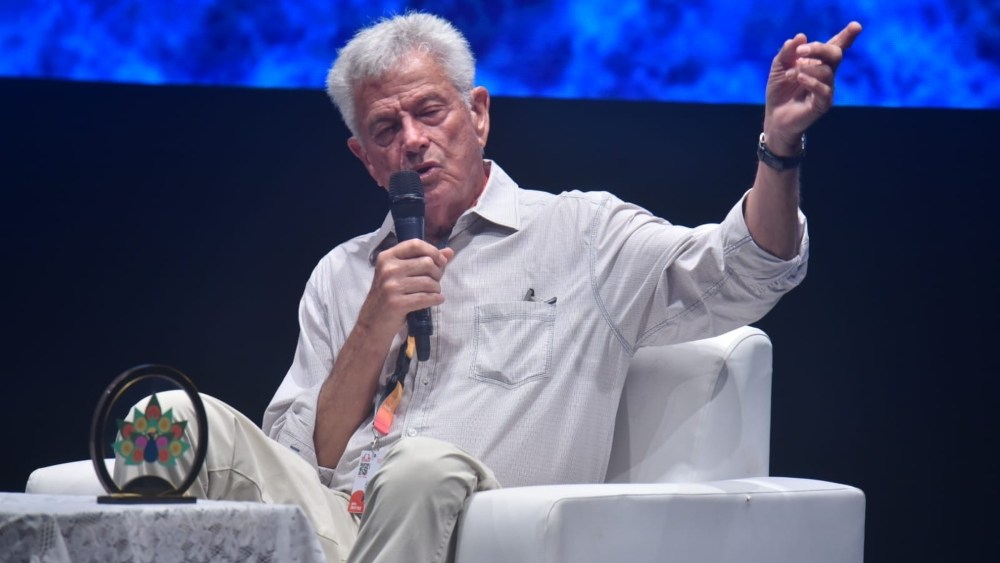John Seale Says Low-Budget Origins Provided Lifelong Lessons
John Seale, the Australian-born cinematographer who won an Oscar for “The English Patient” and has four other nominations for “Witness,” “Rain Man,” “Cold Mountain” and 2015’s “Mad Max: Fury Road,” was one of the highest-profile international guests at the ongoing International Film Festival of India.
In a Saturday masterclass, he examined multiple angles of cinematography and the wider film industry. Topics ranged from working with actors, his preference for being a lighting-cameraman, through to the use of multiple cameras and making sure that he approaches every film as a new and different challenge.
His descriptions of an early career in television, working on low-budgets and the breakout 1980s successes of Australian filmmakers were both a happy trip down memory lane and instructive for those people working outside the comfort zone of the Hollywood system.
“In the early 1960s, the Australian film industry was zilch. There was no feature film industry to speak of at all. There was a very occasional American film that might have come into the Australia or the Pacific. Mainly back then it was television. “After a year in Sydney, I got into the Australian Broadcasting Commission, which is the government run television station, and started a seven-year apprenticeship because there were no film schools.
“We had a core establishment of 26 cameramen, [used] for all aspects of TV coverage, from hard news, television documentaries on rural and agricultural problems, to arts and music. I got long lectures about how to level the camera for a horse race. It sounds silly, but it was invaluable, little hints of how to make a camera record a situation in the best possible way.”
After about four years into his term, ABC decided to go into production of 50-minute dramas. “Suddenly we went into the Outback with actors and a big 35mm camera, and I just fell in love with that,” he said.
Determined to focus more on film, Seale went freelance. It turned out to be a time when the industry was enjoying news success.
“The Australian cinema industry blossomed, and with the wonderful directors, like Phillip Noyce and Peter Weir, who started making films in Australia, that were written by Australians, and started to get world acclaim.”
Seale was a camera operator in 1975 on Weir’s iconic “Picnic at Hanging Rock.” He says he learned much from Weir’s “outstanding” attention to emotional detail. “That raised a simple story about girls who disappear on a mountain into a wonderfully emotional, complex film.”
Seale says he was unimpressed by the Americans who came into Australia with formulaic ideas about what needed to be a wide shot, a medium shot and a close up or what lights needed to be used.
“Why should we [use that] system? Those early films in Australia had garnered quite wonderful international awards,” he said. Nevertheless, Seale went to the U.S. with Weir in 1985 to shoot “Witness,” a film which earned awards nominations for many of the crew.
“We loved the Australian way of working. Nothing was too much trouble. There were no dramas. It was like, ‘Oh, you want to do that? Okay, give me 10 minutes. I can sort that out.’ And, because the Australian films couldn’t afford any overtime, we used to get [given] a cold beer at the end of a day for doing two hours [extra].”
“What we brought to the American system was an honoring of the budget and the schedule, that, I think, helped a lot of Australians to [succeed]. That learning and attitude to life, which we still maintain that to a degree, [means that] there’s an awful lot of Australians now working in America and through Asia and Europe.”


